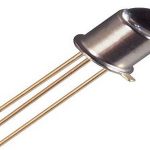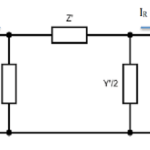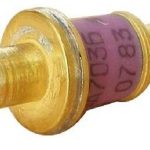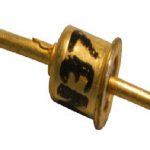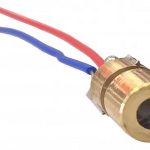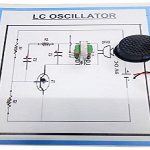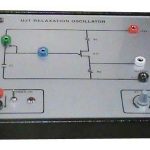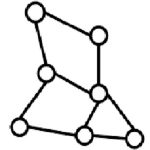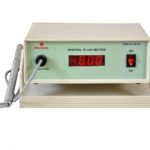After the development of the first point-contact transistor, the phototransistor was invented by one of the teams at Bell Labs. At that time, a large number of developments were being started. Even though the phototransistor history is not publicized like other early developments of semiconductors, but it was certainly a very significant development. The first invention of this transistor was announced on March 30th, 1950. This article discusses an overview of a phototransistor and its … [Read more...]
What is Admittance : Formula & Its Derivation
In the scope of electrical engineering, we are familiar with resistance in digital circuits. Along with this, impedance also shows the impact in AC circuits where consists of the consequences of both capacitance and inductance. The impedance generated by these consequences is combinedly stated as reactance and this creates the imaginary part of the complex impedance while resistance creates the real part. The reciprocal term of impedance is admittance. The inventor of the term admittance is … [Read more...]
What is Gunn Diode : Construction & Its Working
In GaAs semiconductor materials, the electrons are present in two states like high mass low velocity & low mass high velocity. By the demand of an adequate electric field, the electrons are forced to move from a low mass state to a high mass state. At this specific state, electrons can form a group & moves at a consistent rate that can cause to flow current in a series of pulses. So this is known as Gunn Effect which is used by Gunn diodes. These diodes are the best and most frequently … [Read more...]
What is Tunnel Diode : Working & Its Applications
A tunnel diode was discovered by Leo Esaki in the year 1958. He noticed that if a semiconductor diode is doped heavily through impurities, then it will generate negative resistance that means the flow of current across the diode will decreases once the voltage enhances. Leo Esaki got the Nobel Prize in the physics subject for inventing the effect of electron tunneling that is used in these types of diodes in the year 1973. These diodes are one of the most important solid-state electronic … [Read more...]
What is Light Emitting Diode : Working & Its Applications
At present, one of the latest inventions in diodes is an LED or light-emitting diode. These light bulbs are used almost everywhere from cell phones to large display boards. Day by day, its popularity & its usage is increasing rapidly because of some extraordinary properties. In particular, light-emitting diodes are extremely small in size & consume less power. Generally, light-emitting diodes are active semiconductor-type electronic components. As compared to a normal diode, an LED is … [Read more...]
What is Laser Diode – Construction & Its Working
In present photonics technology, LASER diodes play an essential role. The term LASER stands for “Light Amplification by Stimulated Emission of Radiation". A Laser Diode is a p-n junction diode that emits laser radiation once the current is applied in forward direction. These diodes operate on the optical & electrical properties of semiconductor materials & PN junctions. The process used to emit coherent light in this diode is stimulated emission whereas, in light-emitting diodes, the p … [Read more...]
What is LC Oscillator : Circuit & Its Working
In an AC circuit including an inductor & a capacitor, the current and the phase of the voltage are usually different. If you change the circuit components or the power frequency, then the whole circuit will appear simply resistive. Once the LC circuit reaches this condition, then it is known as resonance. In this condition, the circuit reaches the whole impedance or high value. The main essence of resonance is that the energy of the magnetic field within the inductance & the energy of … [Read more...]
What is UJT Relaxation Oscillator & Its Working
A three-terminal semiconductor device like UJT (uni-junction transistor) exhibits different characteristics like switching and negative resistance to using as a relaxation oscillator within phase control applications. This type of transistor can also be used in timing, trigger generator, and gate pulse applications. Similar to diodes, the construction of UJT can be done by using separate P-type & N-type semiconductor materials to form a single PN junction in the main N-type conducting … [Read more...]
What is Nodal Analysis : Differences & Its Examples
In designing electrical circuits, the process of analyzing the circuit is a crucial part, which deals with voltage and current at each branch or node of the circuit. The process of analyzing the circuit is nothing but finding out the unknown voltage and current values of a branch or node. However, this process is complex because more components are connected together in the circuit. Hence the proper technique should be followed to determine the current and voltage. There are two possible … [Read more...]
What is a Flux Meter : Construction & Its Working
In electromagnetism, magnetic flux is defined as the number of magnetic lines of forces observed at the surface of a magnetic material. Magnetic flux is denoted with 'Φ'. The SI unit of magnetic flux is derived as volt-seconds, also known as Weber and Maxwell as CGS unit. To measure the amount of flux generated from a magnetic surface an instrument called 'Fluxmeter' is used. Fluxmeter consists of measuring coils placed between permanent magnets known as Helmholtz coil arrangement. The change in … [Read more...]
- « Previous Page
- 1
- …
- 10
- 11
- 12
- 13
- 14
- …
- 23
- Next Page »
